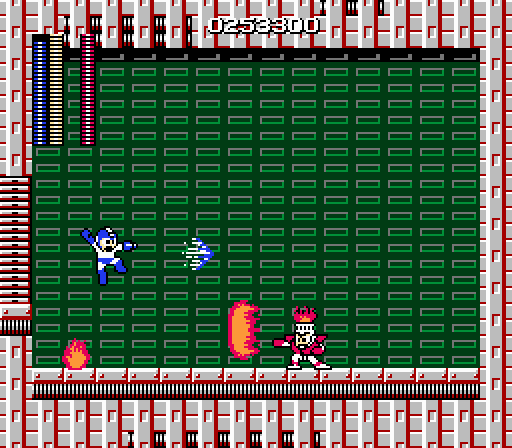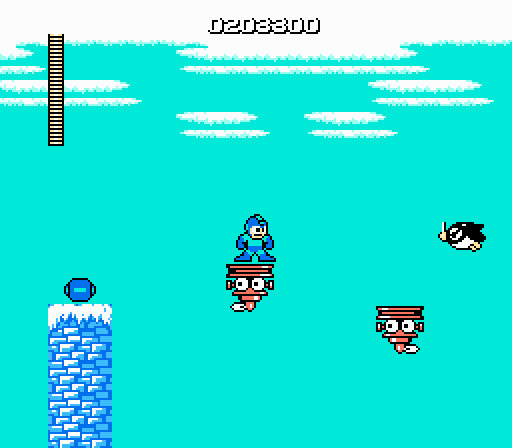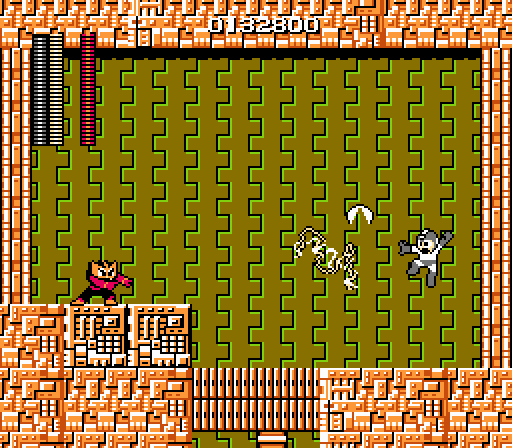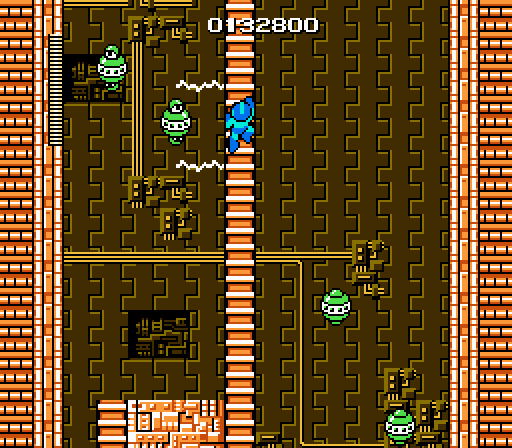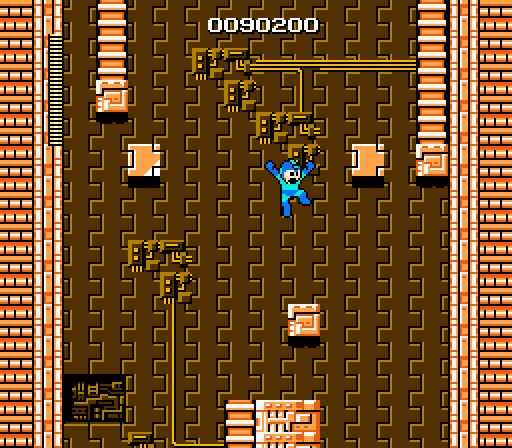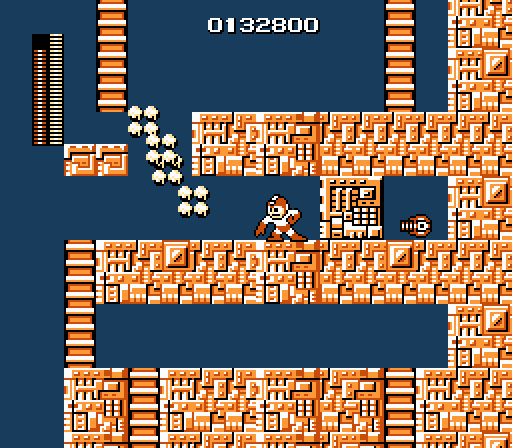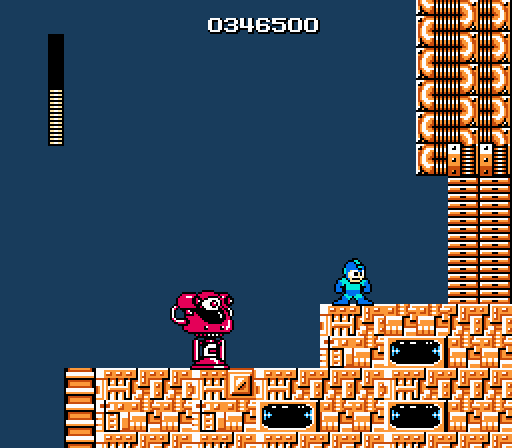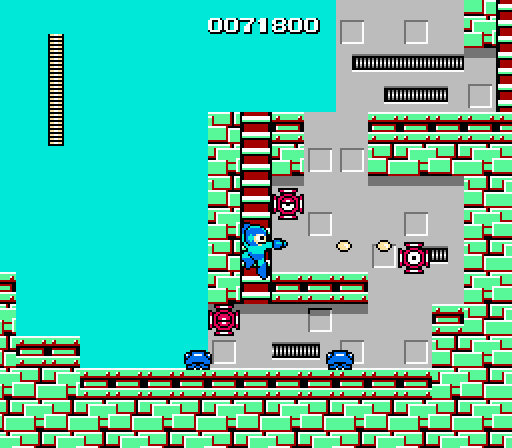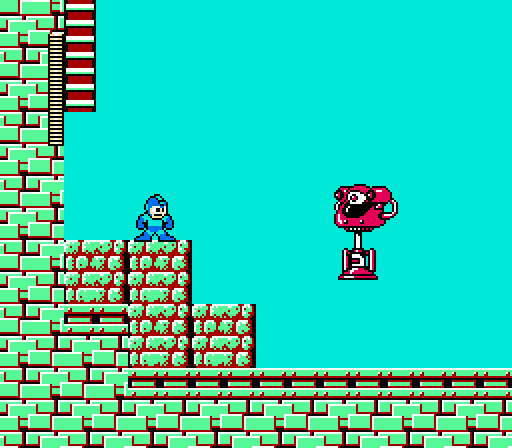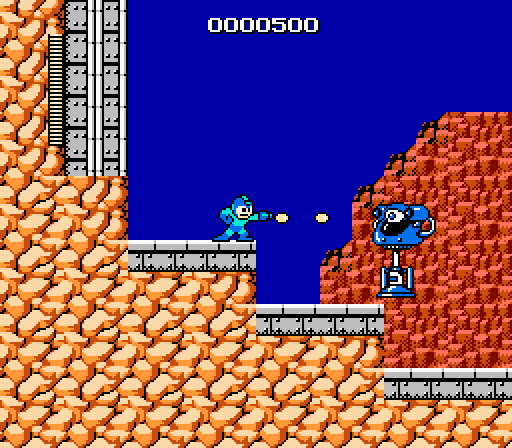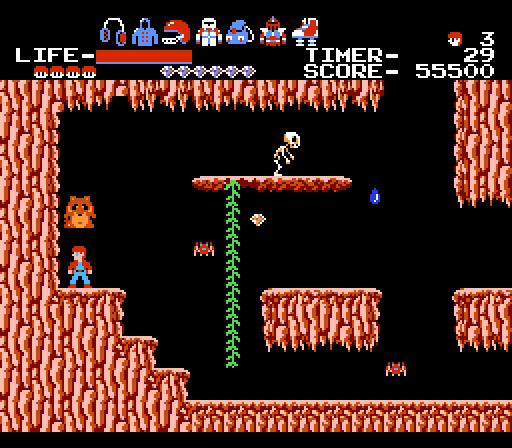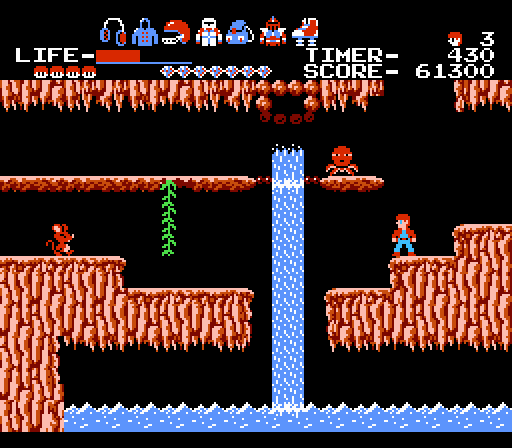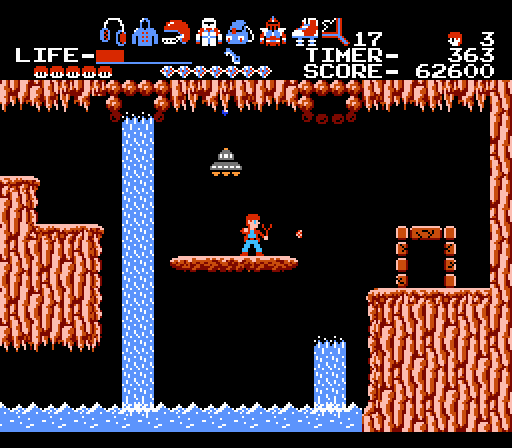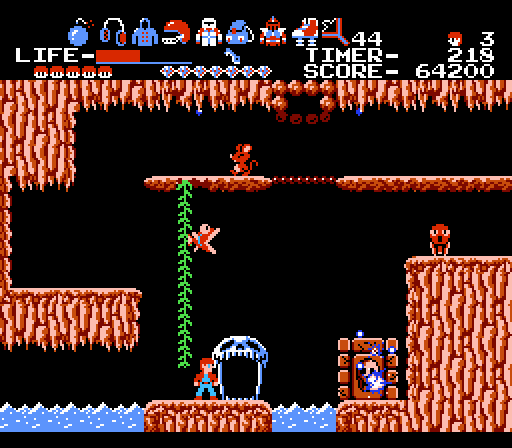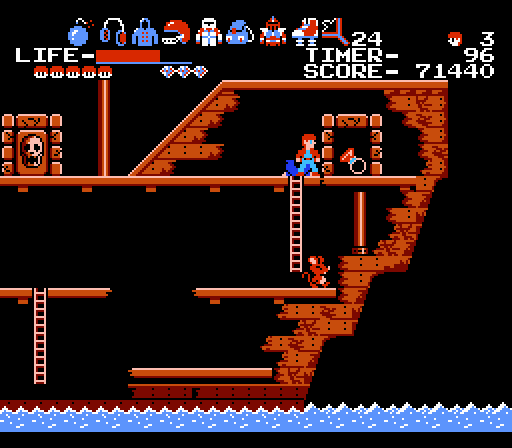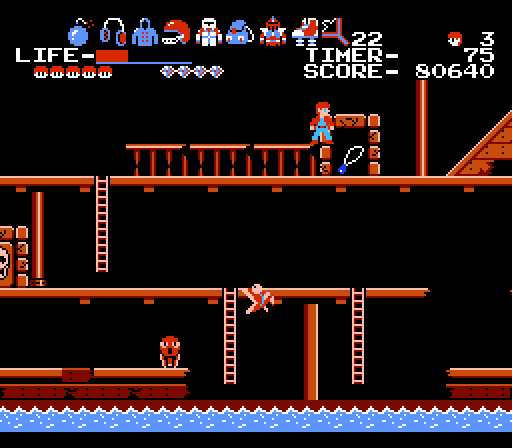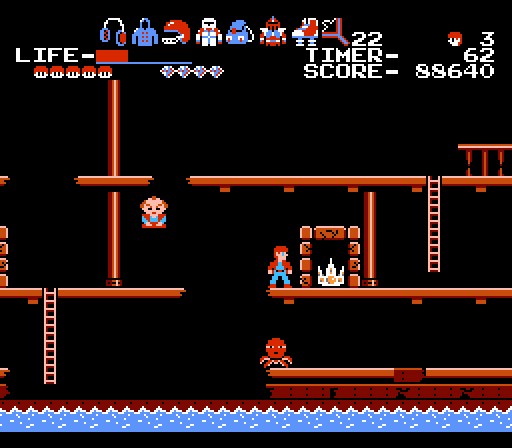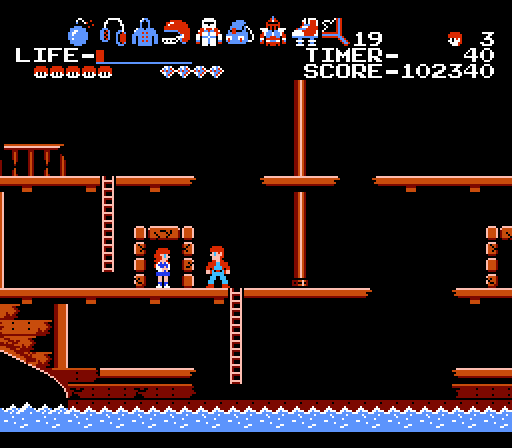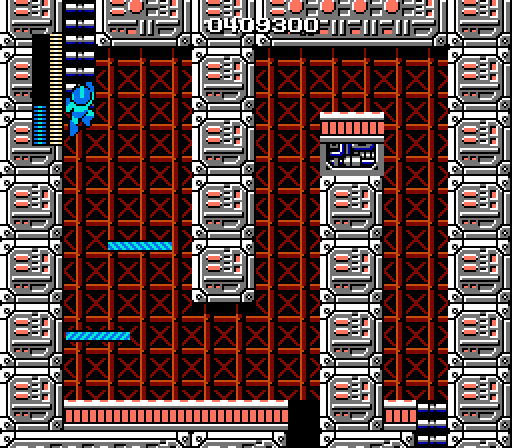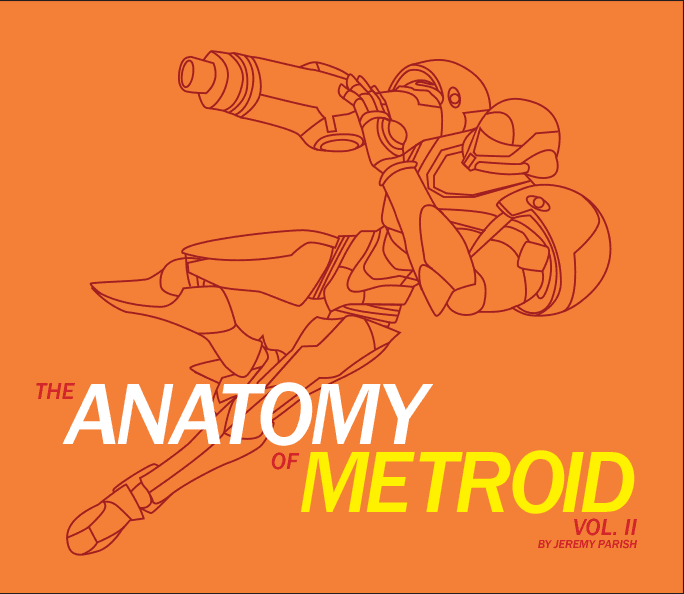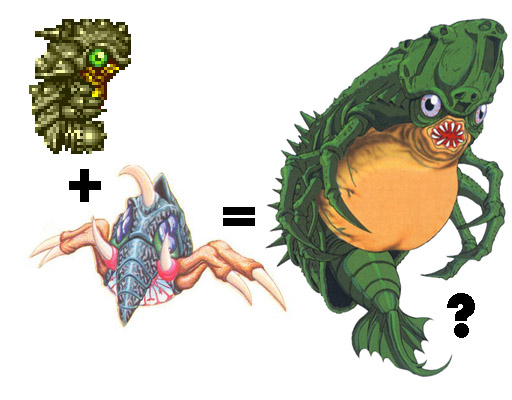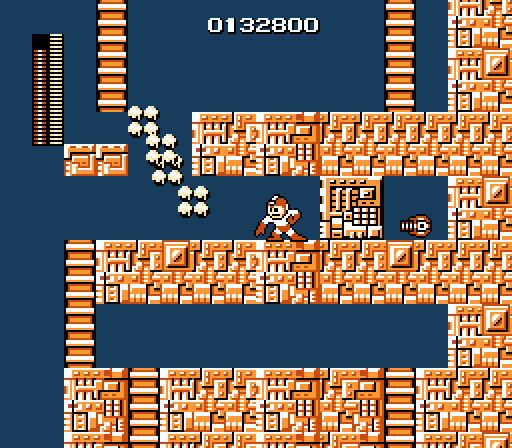The traditional vision of Hell involves flames and burning. But Mega Man goes with the Dante version, in which the deepest pits of Hell appear as frozen wastes, an icy tomb for Satan himself. Compared to Ice Man’s brutal level, Fire Man’s seems comparatively pleasant. Despite being set in a blazing furnace crammed with open pits of molten matter and impassable geysers of flame, the design of this stage embraces newcomers and pros alike with smart design and relatively few unreasonable challenges.
Fire Man himself, however, doesn’t really make an ideal starting point for a fresh playthrough of the game. He doesn’t hit nearly as hard as Elec Man or Ice Man, which befits the not-necessarily-for-experts design of his level, but he can be maddeningly difficult to best. Fire Man plays it aggro, getting right up in your face and pelting you with his weapon, the Fire Storm.
As is often the case in this game, the Robot Master’s version of his weapon differs considerably from the way it works for Mega Man. The player’s version of the Fire Storm blasts small fireballs while a second ball rapidly circles Mega Man to function as a sort of shield; for Fire Man, though, it takes the form of a wide wave about the height of Mega Man which flies straight ahead at a rapid clip. Meanwhile, a flame ignites on the ground beneath Mega Man and burns momentarily. To evade Fire Man, you need to stay on the move to avoid being caught by the pilot light while making high jumps over his horizontal attacks and dodging his tackles.
This is more easily said than done, and despite not being as strong an attacker as some of his peers, Fire Man can make short work of you. After all, you have to take shots at him between all that evasion, and even his weakness – the Ice Slasher – doesn’t do nearly as much damage as some super-effective weapons do to their opposite numbers. That pilot light in particular is especially hard to avoid, since it bursts up beneath Mega Man every time Fire Man’s direct attack crosses his path.
So, yes, Ice Slasher is your key weapon here, and it does a great job throughout the stage. On the starting screen, you can use it to freeze these pop-up turrets while they’re exposed and plink them with P bullets as they’re immobilized.
It’s also incredibly valuable against these flame pillars, which rise and fall at regular intervals. Nothing can damage or destroy the columns of fire, but the Ice Slasher can freeze them and immobilize them.
“Waves” seems to be the theme of this entire stage. Not only are you avoiding waves of fire, but the stage design itself follows a wave-like design, constantly undulating. You’re moving up and down, left and right, constantly doubling back and forth on many of the stage’s screens. It betrays the vintage of Mega Man – a game released in the early days of the platformer genre being a thing that involved scrolling. In single-screen platformers, every inch of real estate is precious; think back to Donkey Kong and Mario’s left-and-right movements across the girders of the first stage. Fire Man’s stage calls back to that era with a twisting layout that I don’t think is seen anywhere else in the series. As such, you get a lot more mileage out of the stage without it feeling padded, as every nook of the level is designed to make the most of the threats you face here.
At the high point of the stage, the vertical fire vents are complemented by fiery red variants on the beams in Elec Man’s stage. Yeah, they’re palette swaps, but it works.
Less successful is this sequence, where a series of (twisting, sinuous, wave-like) ducts conduct flames across the main path. These are the same bursts of fire that Fire Man throws at you, which makes for both economy of cartridge storage space and a nice touch of thematic consistency, but unfortunately they also travel at high speeds. It’s extremely difficult – possibly impossible? – to duck through these spaces without taking a hit.
You can, however, breeze through with the Magnet Beam. I question the design of a sequence that’s impossible to clear without the use of an optional tool, but on the other hand this area is a lot less hateful than the pits in Ice Man’s stage. I suppose it’s all relative.
The other feature that defines Fire Man’s stage is a preponderance of small platforms over seas of molten fluid or empty pits. While none of these create as tense a sensation as the tiny single-block platforms in Elec Man’s stage, they test your evasion and preemptive attacks. The Tackle Fires above rise from the flames in every area dotted with narrow footholds, descending again from the ceiling toward your current position. While the platforms themselves aren’t particularly dangerous, the hazards from above approach at oblique angles and can potentially bump you into the flames – that excessive damage knockback at work.
Fittingly, the Ice Slasher makes a helpful weapon against the Tackle Fires, too, capable of freezing them mid-air. And there’s even a massive energy refill right before the Robot Master chamber to encourage use of the Ice Slasher throughout. Cheap-hit ducts aside, a strong level.
